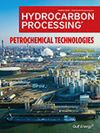Furnaces
Develop competence in the process industry with a digitalized operator learning path
Industrial digitalization is changing the standards for operator training in the global process industry.
Energy losses from the radiant firebox wall of pyrolysis furnaces
The steam cracking unit is highly energy demanding, requiring high-severity pyrolysis furnaces to break the carbon-carbon bonds, as well as high pressure for the purification of its products.
Ensure uniformity of air preheater flow to obtain maximum heat transfer efficiency
Uniform flow distribution inside process equipment is desirable for maximizing performance.
Carburization inspection robots for radiant tubes inside ethylene cracking furnaces
In an olefins plant, the reliability of ethylene cracking furnaces is one of the deciding factors used to indicate whether or not the plant can be operated at its design productivity.
Modified revamp process to reduce energy use in an SDA unit
Solvent deasphalting (SDA) is emerging as a low-cost, bottom-of-the-barrel upgrading process to recover valuable oil from short residue. This oil can either be further processed to make lube-oil-based stocks or cracked in secondary processing units.
Improve energy efficiency with enhanced bundles in tubular heat exchangers
From 2008 to date, 45 twisted tube heat exchangers and bundles have been installed at BAYERNOIL refineries in different units and services, allowing higher heat recovery and contributing to BAYERNOIL’s energy targets.
Recommended practices for fired process heater instrumentation and control
Fired process heaters are one of the most critical pieces of equipment within many refinery and petrochemical facilities. Proper instrumentation and control of the equipment has direct bearing on the successful operation of the process, as well as on overall facility process safety.
A deeper examination of thermal expansion issues in process equipment and piping
Piping and process equipment that operate at high temperatures experience thermal expansion. If free thermal expansion is restrained, mechanical stresses are created within the component.
IR camera technology provides new perspective on furnace inspection routines
A few years ago, managers at a US-based oil refinery called in an expert to inspect their oil furnaces with an infrared (IR) camera.
Reduce coke formation and save operating costs with optimization of DMDS into ethane cracking furnaces
Steam cracking furnaces produce olefins, which are high-value feeds in the petrochemical industry. Coke formation is an unavoidable part of a thermal cracking furnace.

- China's Wanhua Chemical starts operation at new east China cracker 4/4
- Brookfield Infrastructure announces the acquisition of Colonial Enterprises for $9 B 4/4
- PBF restarts some units at Martinez refinery after February fire; fire-damaged units remain shut 4/4
- Japan to curb gasoline prices from June to cushion U.S. tariff blow 4/4
- Evonik presents innovative "Debonding on Demand" concept for more sustainable bonding 4/3
- Oil, gas and refined product imports exempted from Trump’s sweeping tariffs 4/3




